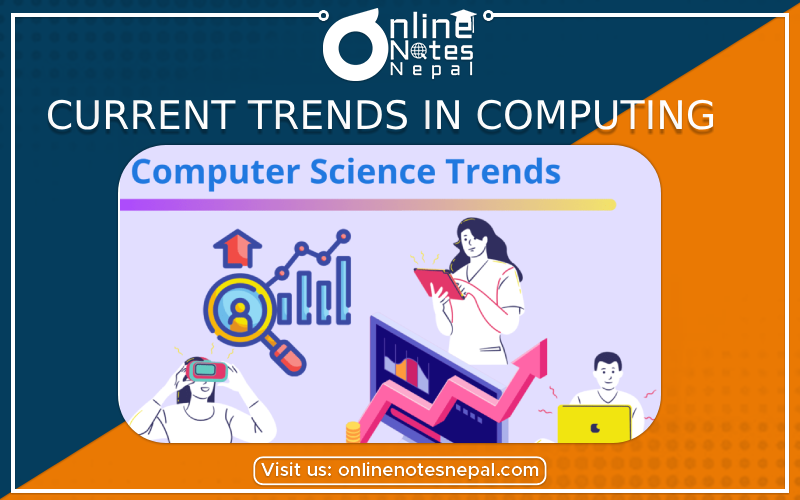Published by: Anu Poudeli
Published date: 30 Jul 2023

Computing trends were continually shifting as of my previous post in September 2021, and there were several major themes impacting the industry. Please keep in mind that the information below may not reflect the most recent status of computing developments in 2023. It's usually a good idea to double-check with current sources. Here are some of the major trends that were popular during the time:
1.Artificial Intelligence (AI) and Machine Learning (ML): AI and ML have gained traction in a variety of industries and applications. AI and ML were being used to transform processes, optimize efficiency, and drive innovation, from chatbots and virtual assistants to predictive analytics and autonomous systems.
2.Internet of Things (IoT): The Internet of Things (IoT) was progressively connecting everyday objects and devices to the internet, allowing them to collect and exchange data. Smart homes and wearables, as well as industrial automation and smart cities, were among the IoT applications that improved ease and automation in a variety of areas.
3.Cloud Computing: Cloud computing adoption has been gradually increasing. Cloud services provided scalability, cost-effectiveness, and flexibility, allowing organizations to utilize computer resources on-demand without requiring significant infrastructure expenditures.
4.Edge Computing: As IoT devices and applications expanded, so did interest in edge computing. Instead of transmitting all data to centralized servers, edge computing entailed processing data closer to the source (at the network's "edge"). This method lowered latency, increased real-time processing, and reduced bandwidth use.
5.Quantam Computing : Although still in its early phases, quantum computing has shown enormous promise in tackling challenging problems that traditional computers have struggled to solve efficiently. Researchers and companies investigated the possibilities of quantum computing in domains such as cryptography, drug discovery, optimization, and simulations.
6.Cybersecurity: As people's reliance on technology and data has grown, so has the importance of cybersecurity. Organizations increased their investment in robust security measures to safeguard sensitive information, combat cyber threats, and comply with data protection rules.
7.5G Technology: The deployment of 5G networks in various countries has continued, promising quicker and more dependable connectivity. This improvement paved the way for the creation of new applications and services that demanded larger bandwidth and lower latency.
8.Augmented Reality (AR) and Virtual Reality (VR): These technologies have found use in gaming, training, education, and marketing. They provided customers with immersive and interactive experiences that engaged them in novel and intriguing ways.
9.Agile and DevOps: Software development processes have expanded to include DevOps and Agile methodologies. Agile methodology stressed iterative and customer-centric development processes, whereas DevOps promoted collaboration and automation between development and operations teams.
10.Sustainability and Green IT: As public concern about climate change grew, so did the computing industry's emphasis on sustainability. Companies sought to lower their carbon footprint by using energy-efficient gear, optimizing data centers, and supporting environmentally friendly practices.
These, and other trends, shaped the computing scene in 2021. However, the world of technology is incredibly dynamic, and new trends may emerge.